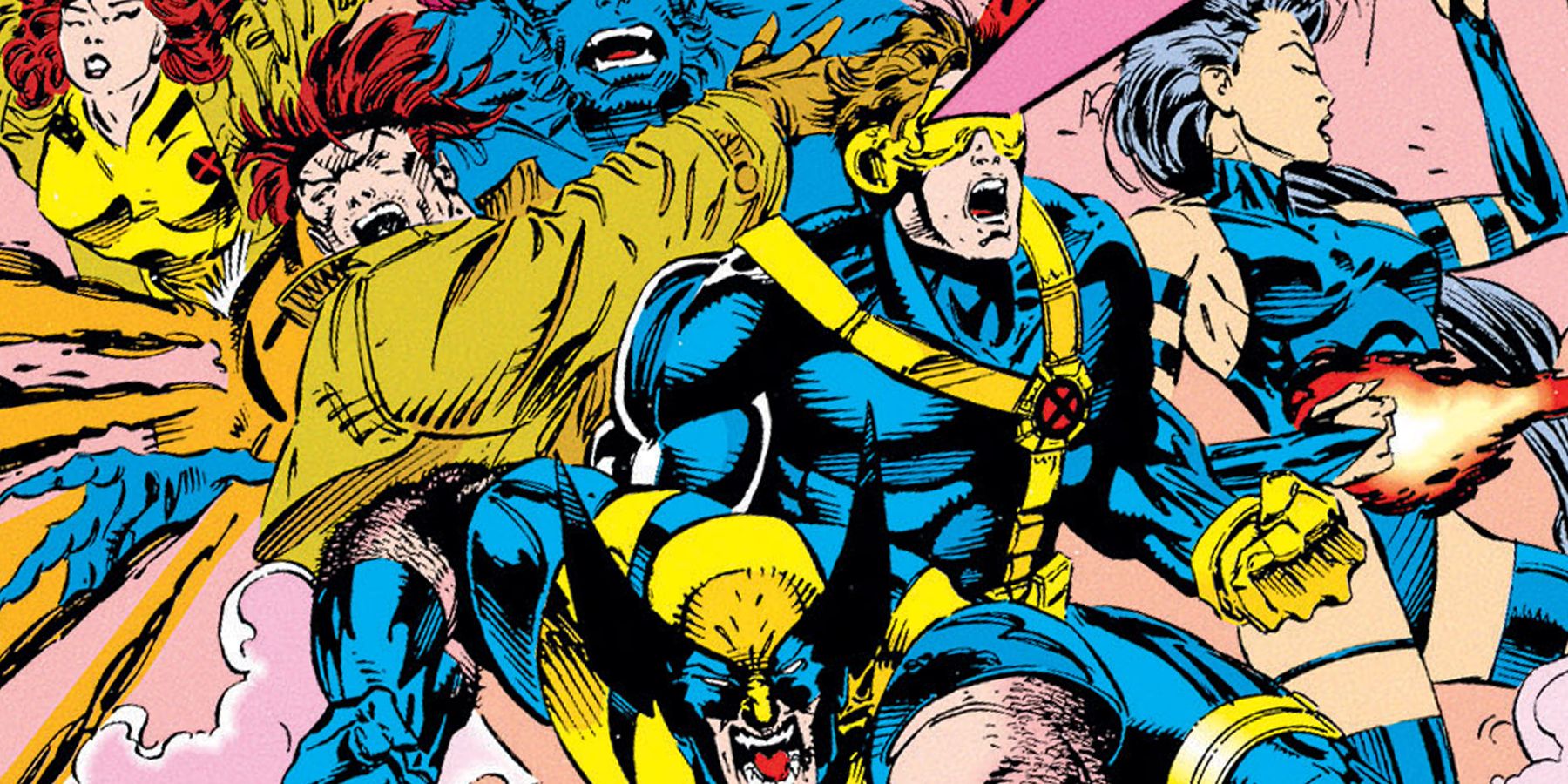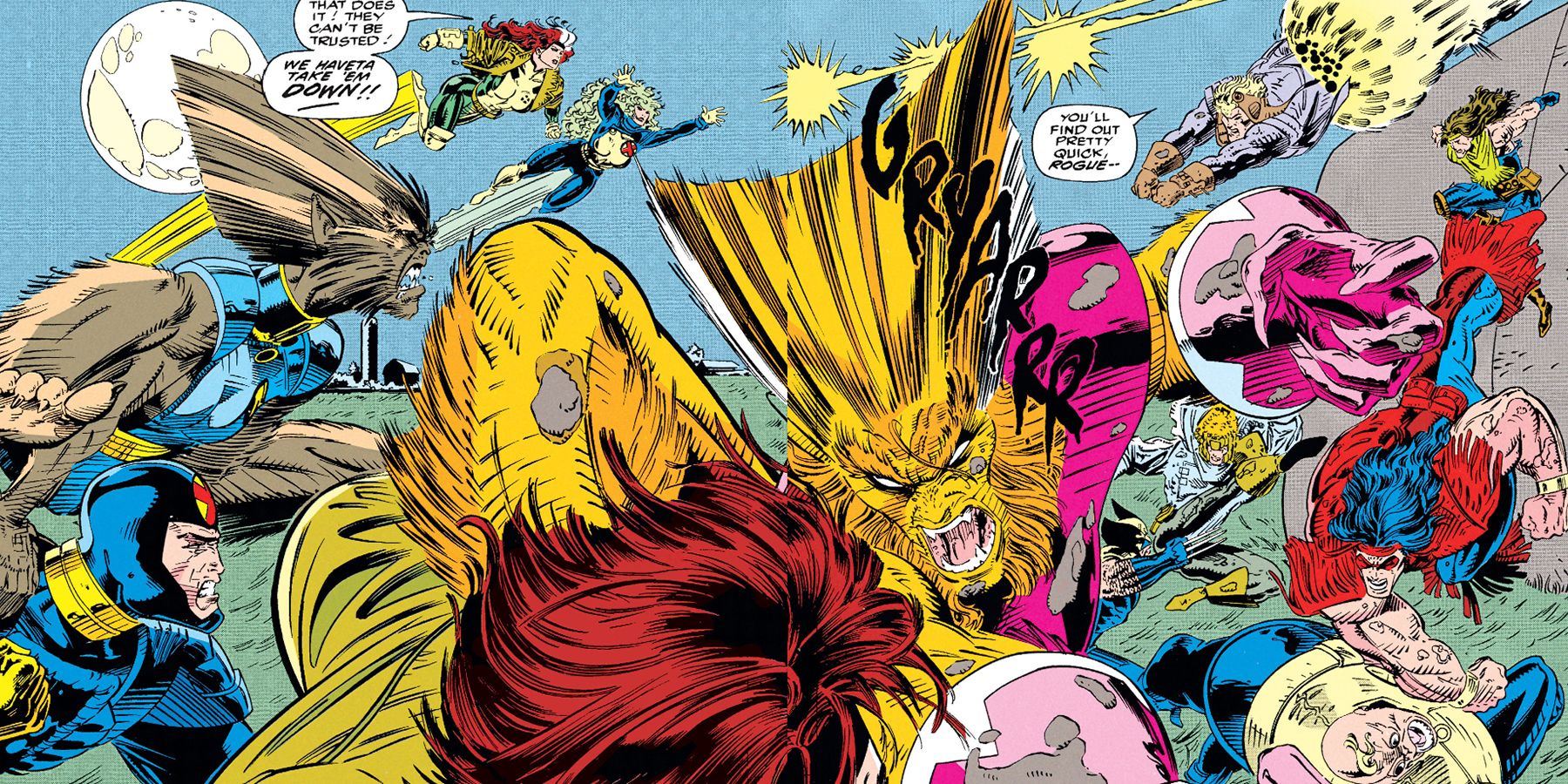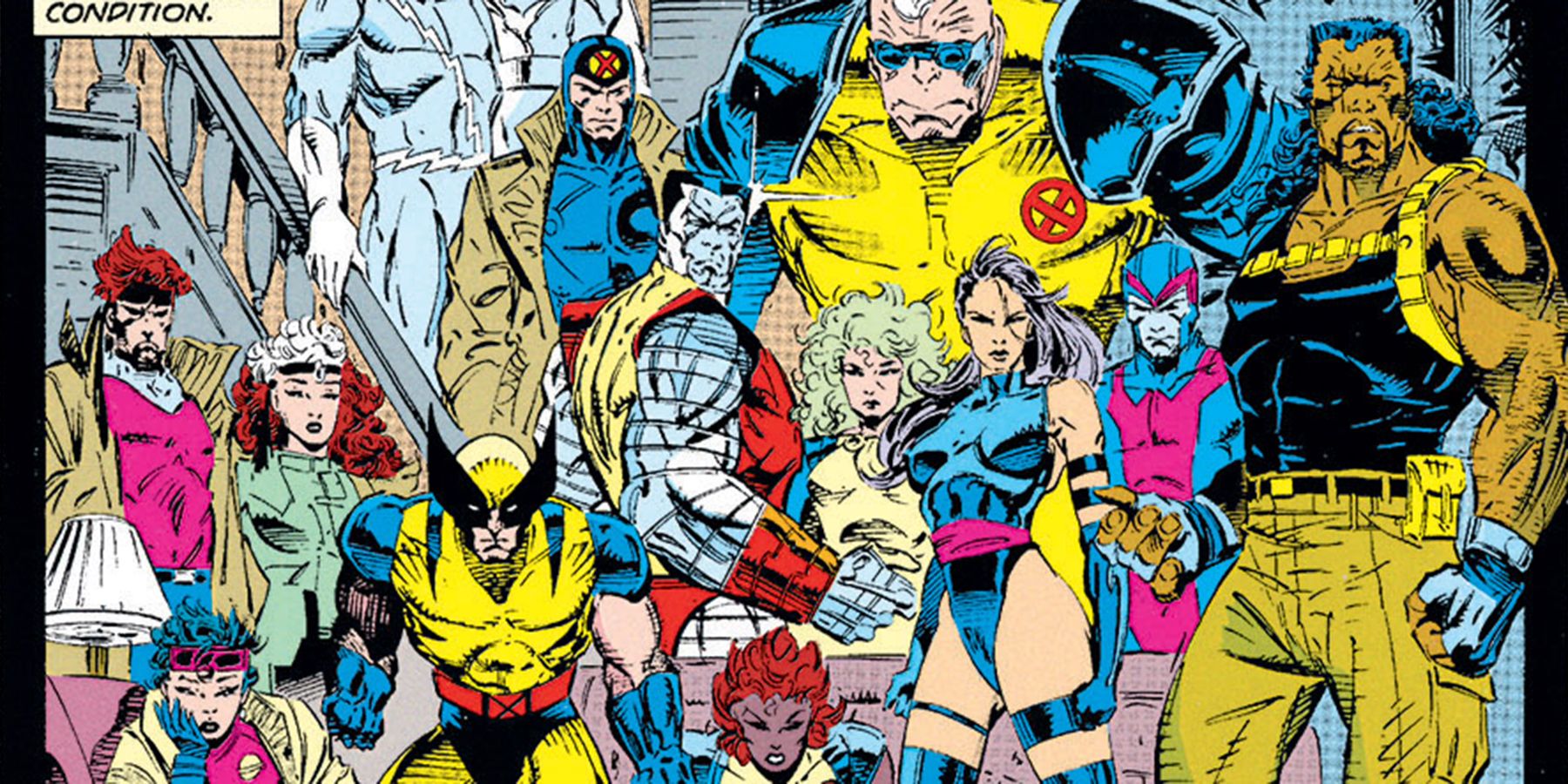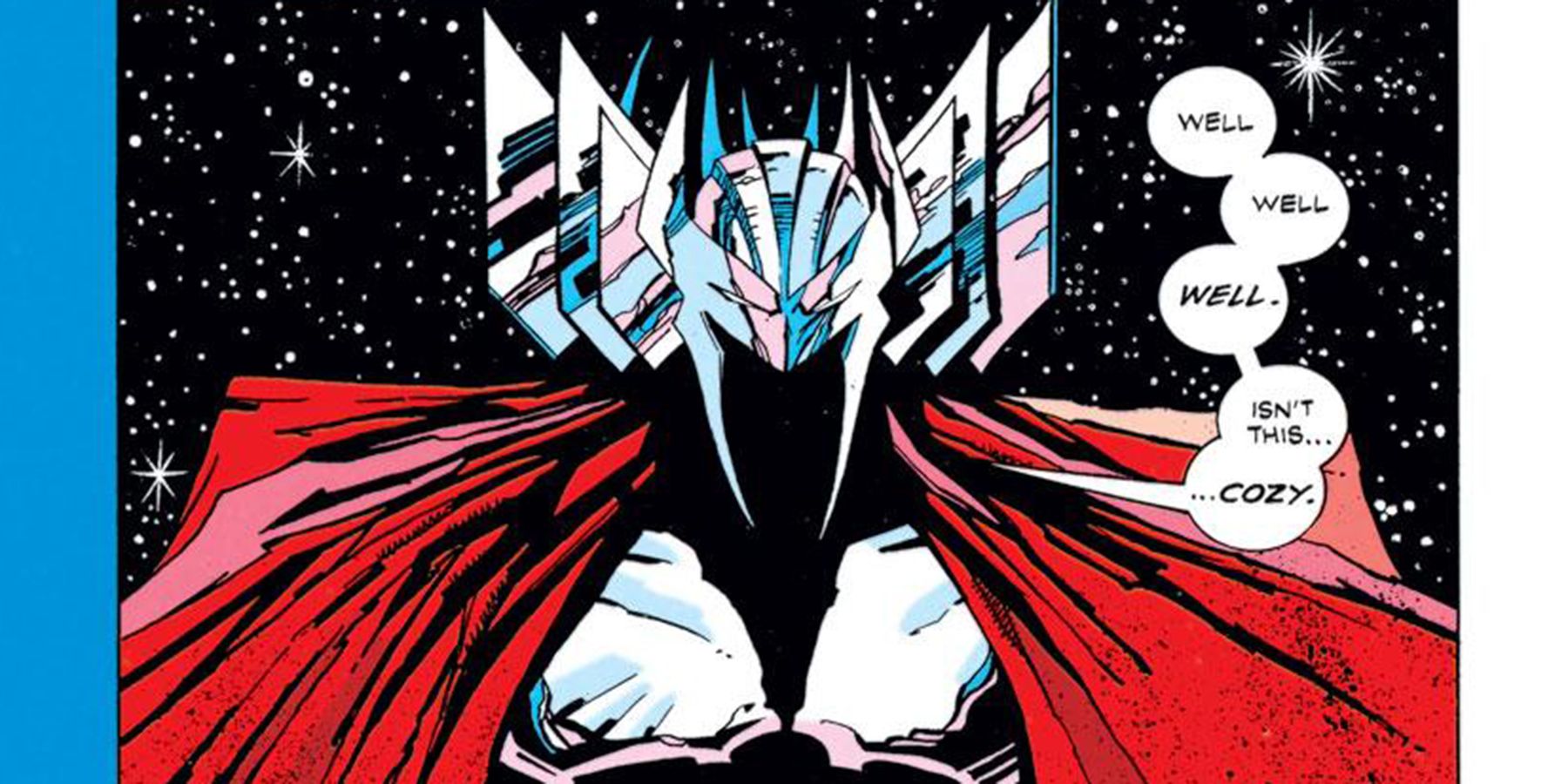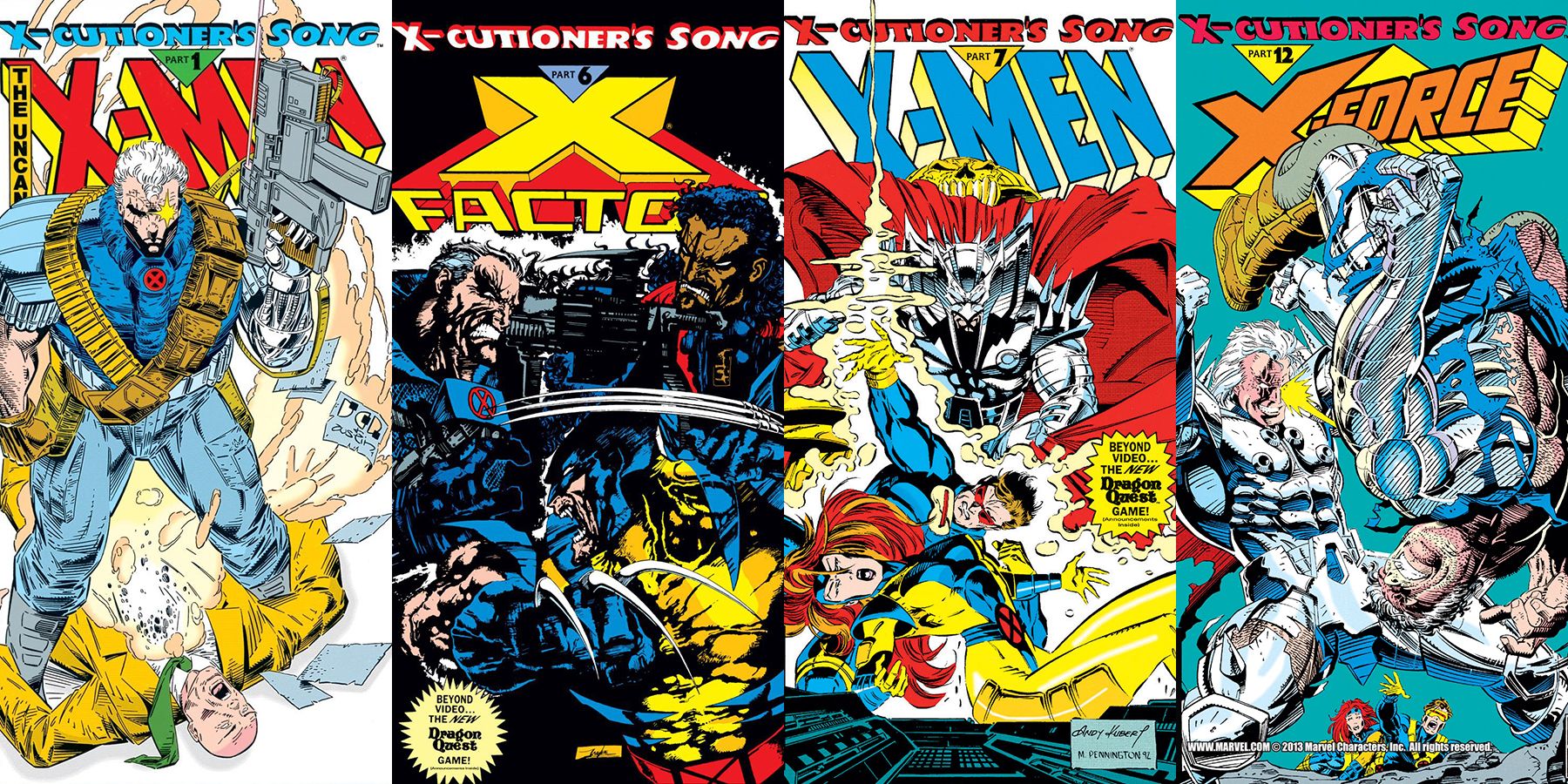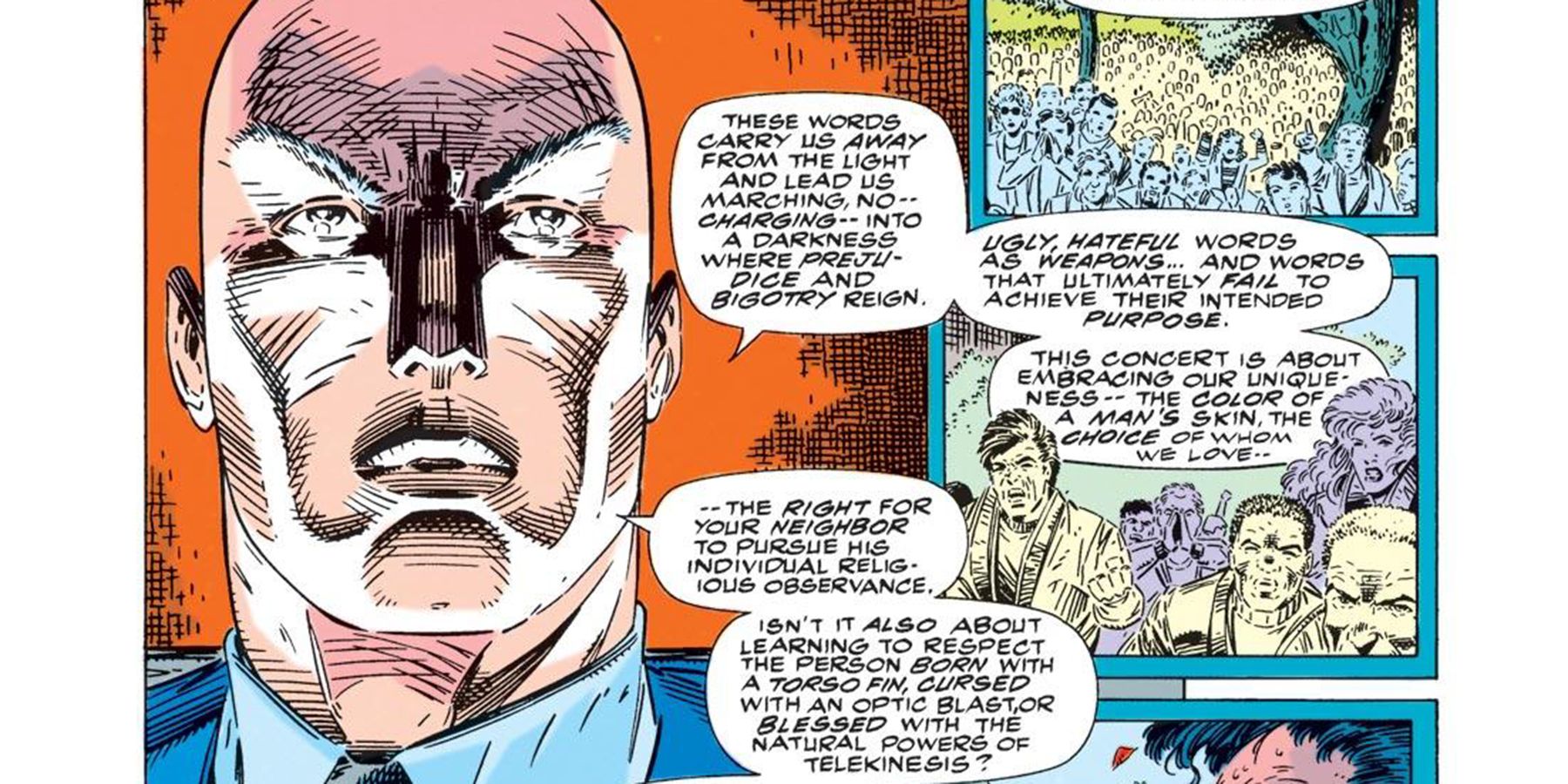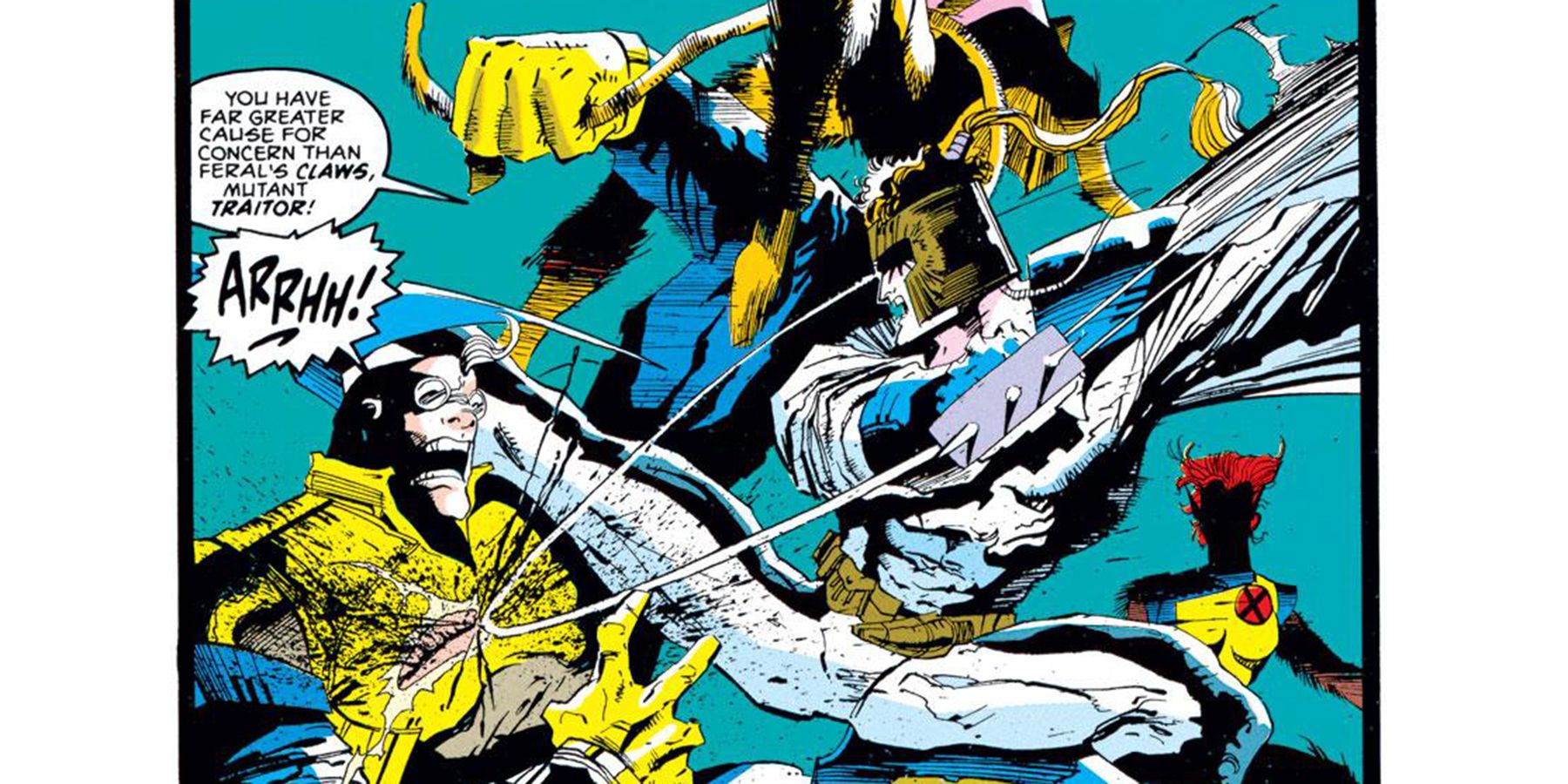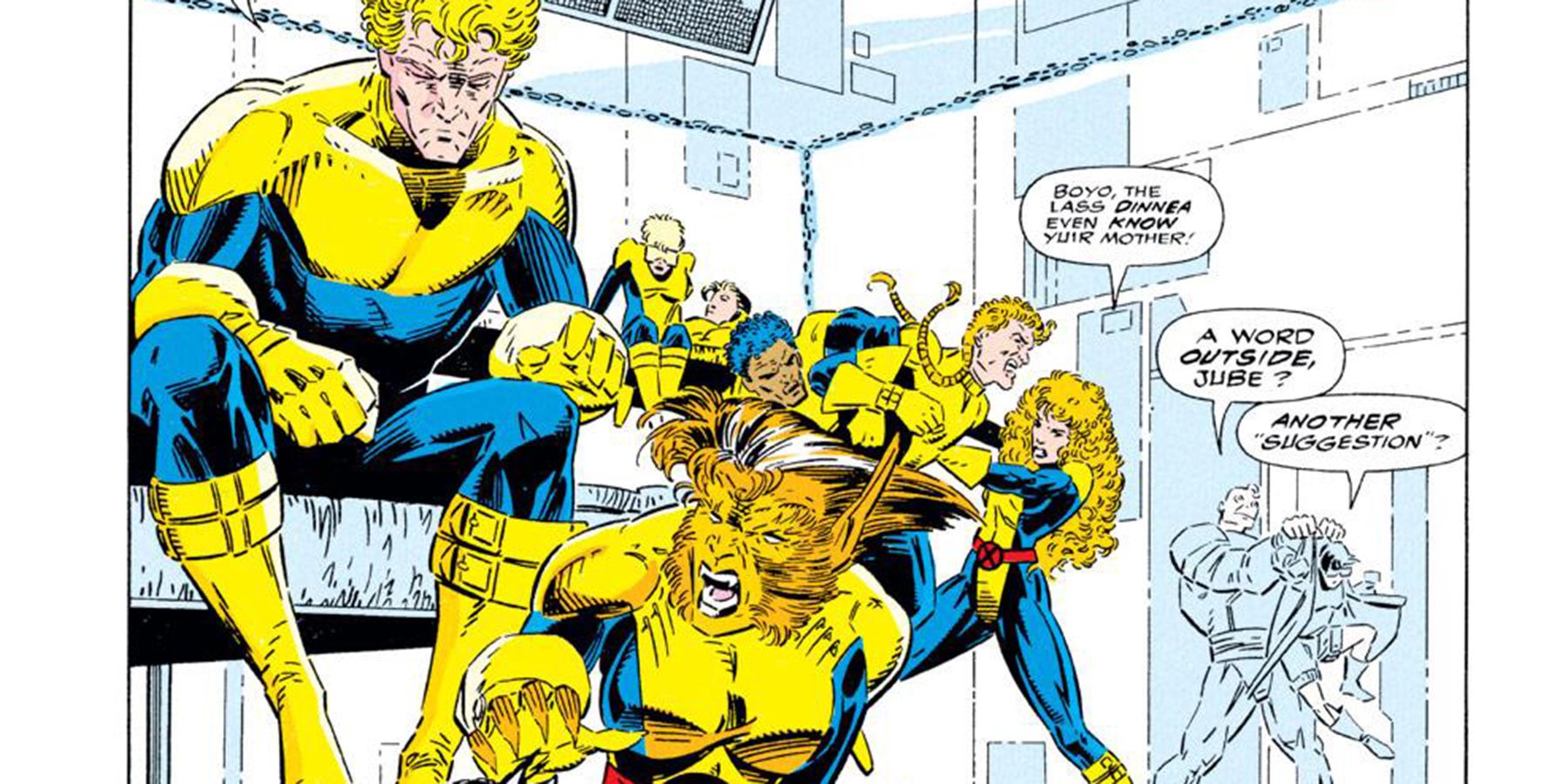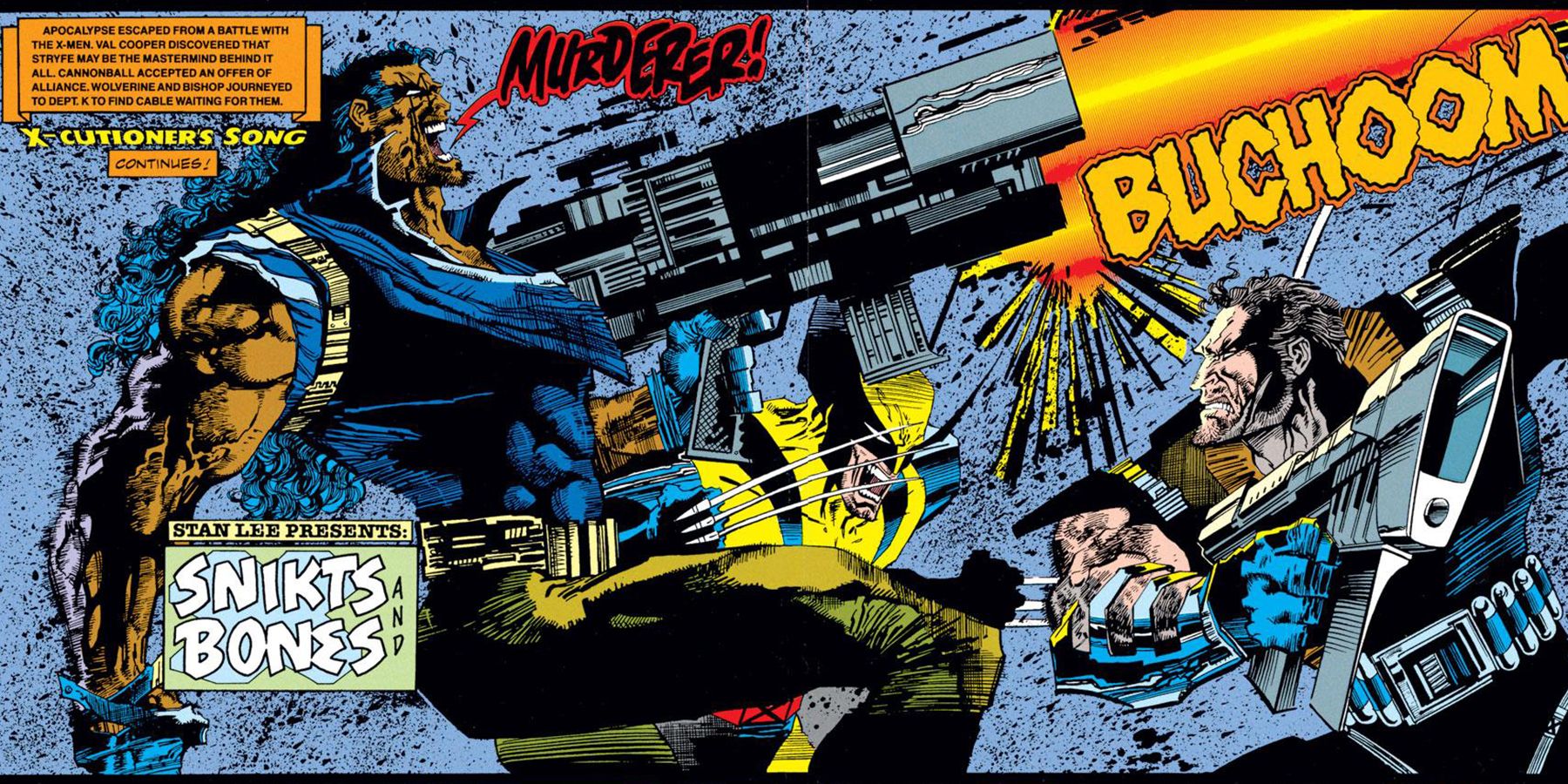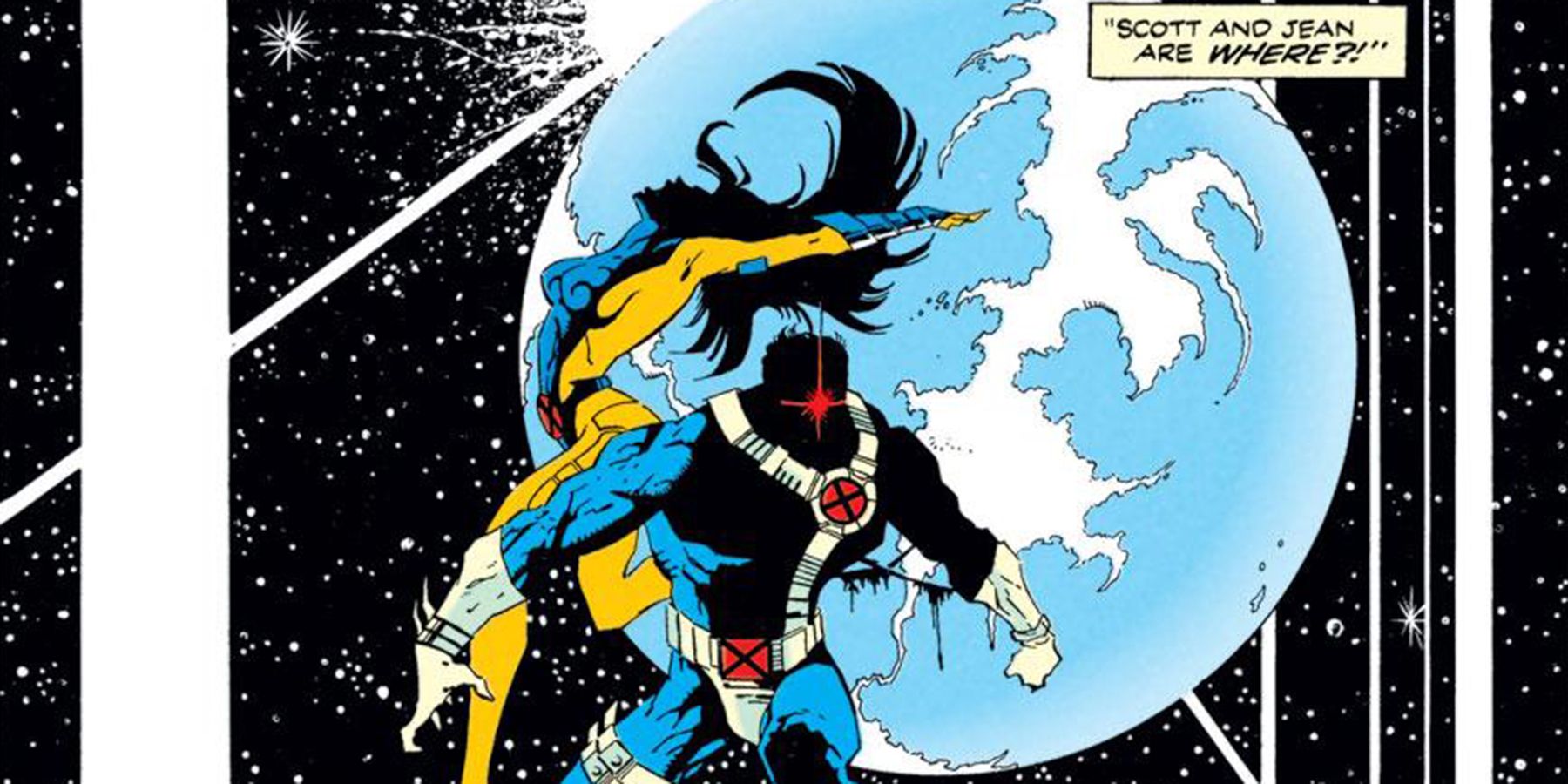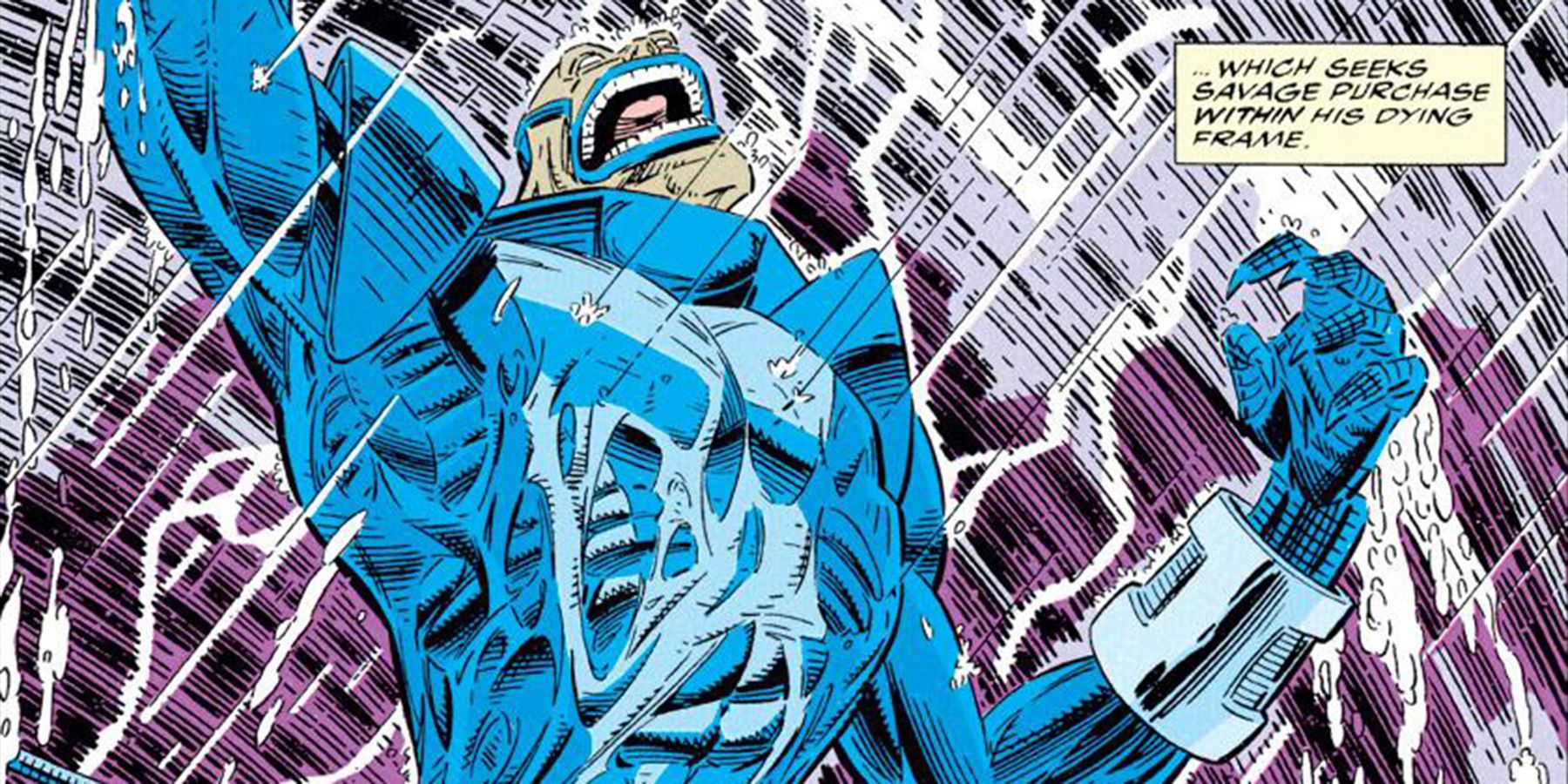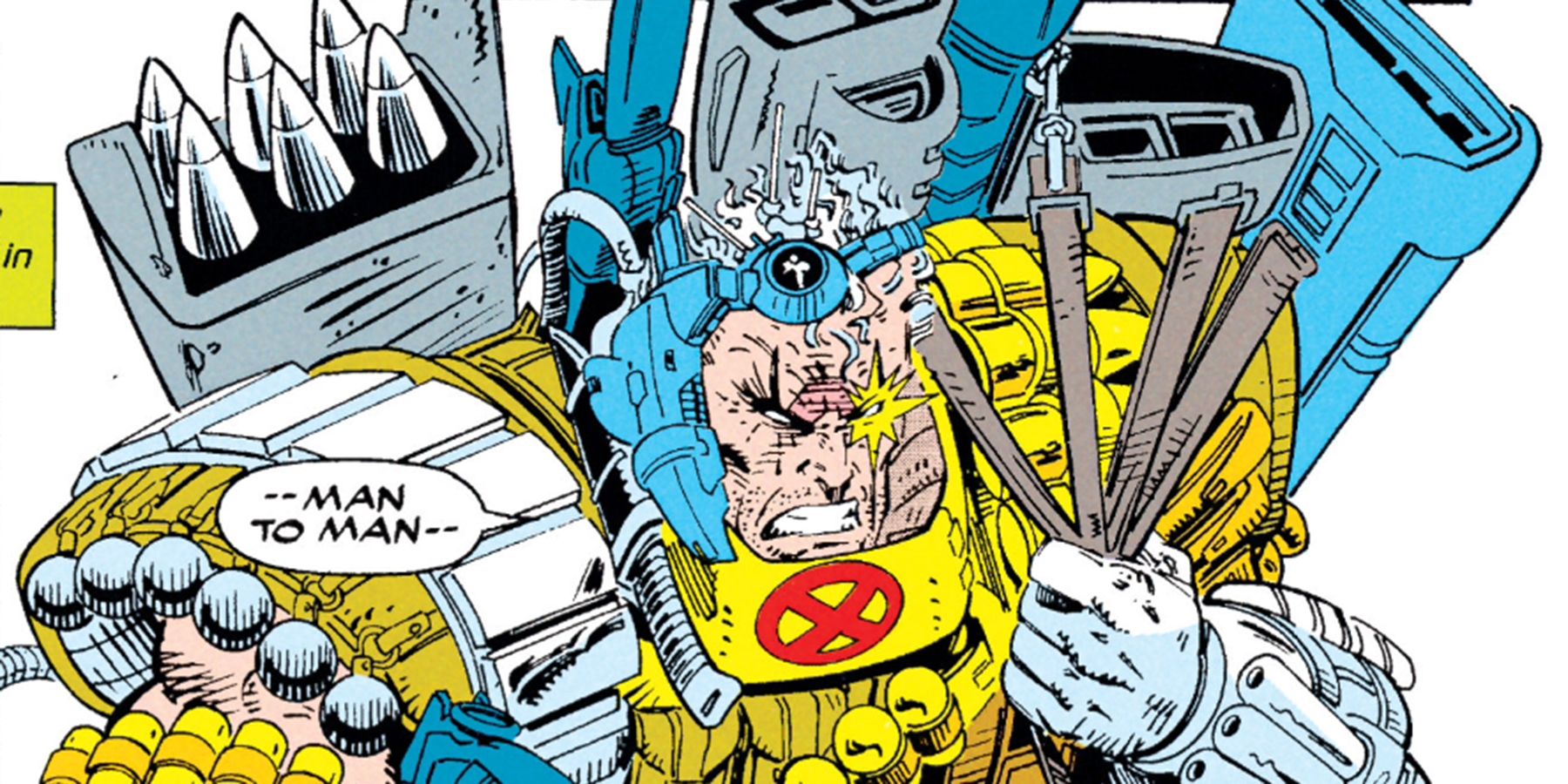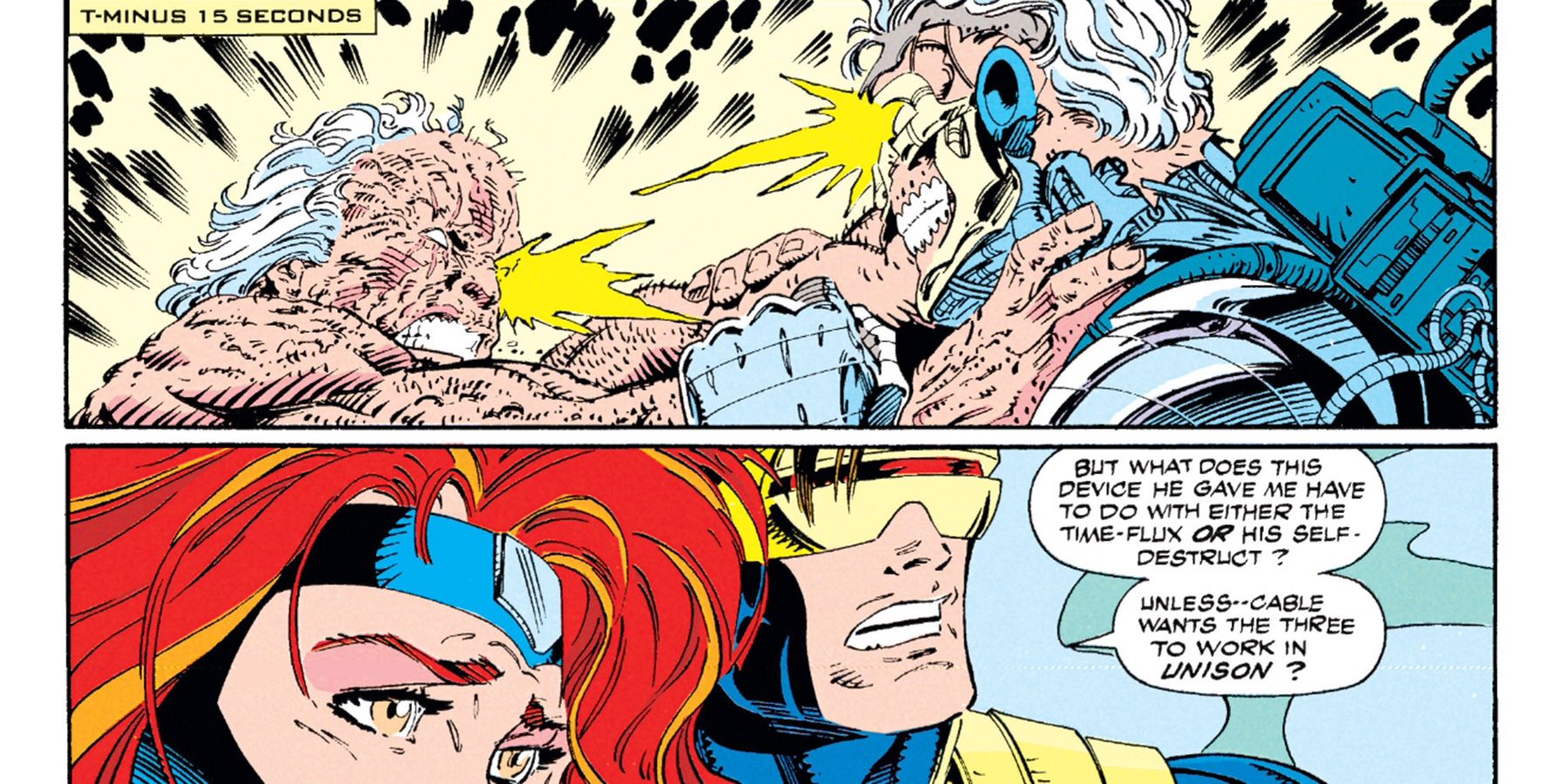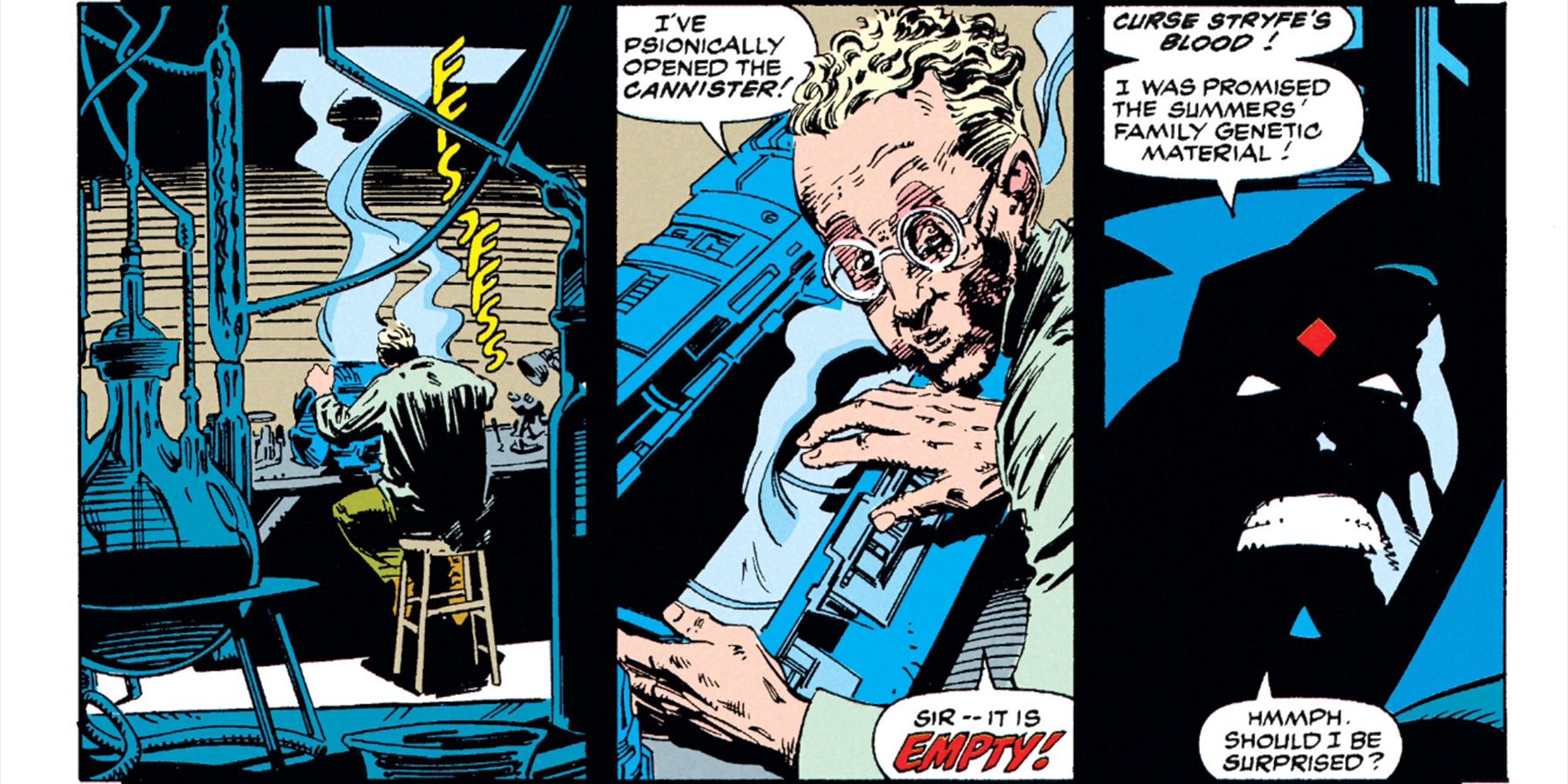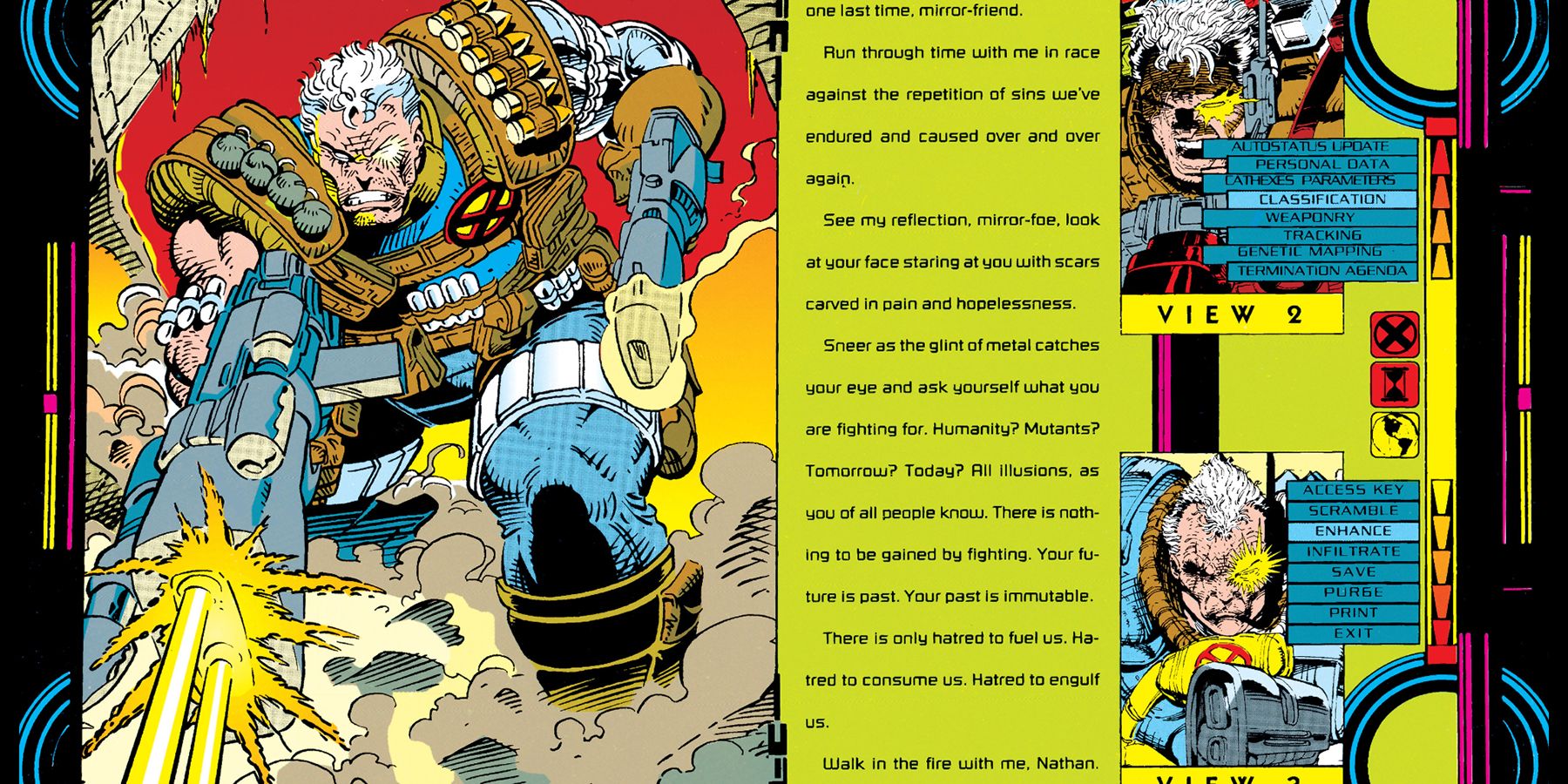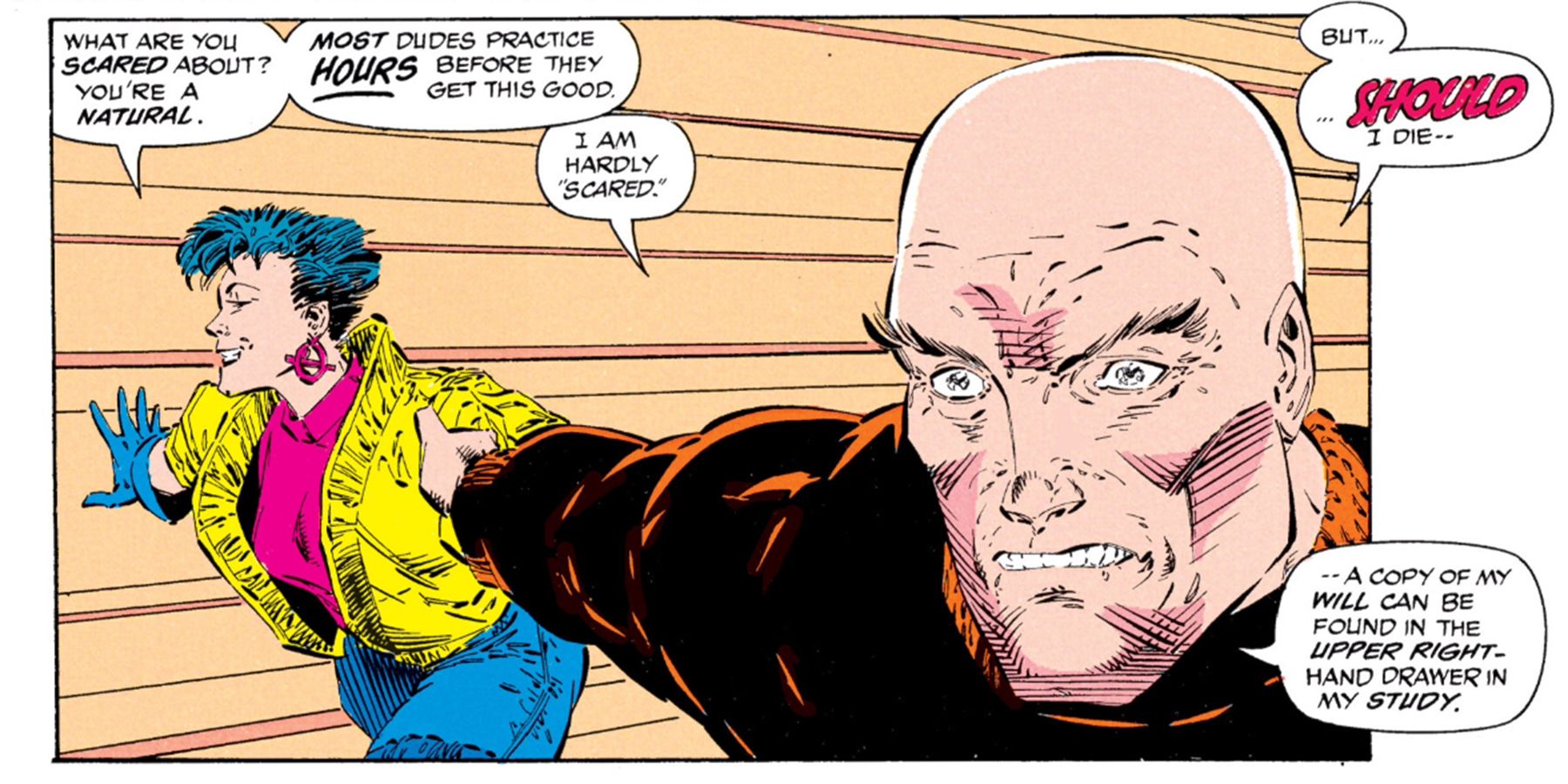The '90s are back! Whether it's through new retro-style series like "X-Men' 92," the return of characters like the Nasty Boys or Exodus, or new printings of classic comics, fans both new and old are discovering what made the '90s era of the X-Men so radical. With a new printing of the classic "X-Cutioner's Song" storyline, now is the perfect time to revisit one of the most '90s comic stories of all time -- and we mean that in the best way.
RELATED: X-Tended Lives: The Longest-Running X-Men Titles
Originally published in late 1992, "X-Cutioner's Song" -- written by Scott Lobdell, Peter David and Fabian Nicieza -- caught the X-Men at the height of their popularity. With a hit cartoon on Fox, and toys and video games in every department store, an entire generation of fans were swept up in X-Mania. These comics prove why the X-Men were such a hit, and why they're still great today. Here are the 15 reasons why "X-Cutioner’s Song" is worth a reread.
15 '90s Nostalgia
This one's obvious: '90s nostalgia is a real selling point nowadays, and it doesn't get more '90s than "X-Cutioner's Song." We'll touch upon all the ways this comic is extremely '90s in upcoming entries, but consider this an overview. This storyline is action-packed with art to match. If you're new to the '90s, just accept that every hero wears a ton of belts and pouches -- and never try to figure out what is in those pouches.
"X-Cutioner's Song" also has more than its fair share of one-liners. If you grew up in the '90s, then you'll recognize the bright color palette and energetic style from other comics, movies, TV shows and even commercials of the era. If you're younger, then "X-Cutioner's Song" really serves as an excellent entry point into an era that's now being revisited in everything from movies ("Jurassic World") to TV shows ("Fuller House"). On top of all that, "X-Cutioner's Song" actually has a story to tell.
14 X-Men Crash Course
The X-Men are one of the most delightfully dense and gleefully confusing comic franchises of all time. You could easily reread this story as a crash course in all things "X." Sure, you could just start with issue #1 from 1963, or with their relaunch in the mid-'70s, but there's a real case to be made for jumping into the deep end and cracking open "X-Cutioner's Song" first.
For the last 30 years, the X-Men have been a sprawling franchise. "X-Cutioner's Song" represents the team at the early height of their extremity. The crossover cuts through four ongoings series: "Uncanny X-Men," "X-Factor," "X-Men" and "X-Force." All four of those books star their own distinct teams, meaning you can get reacquainted with over two dozen mutants in this one story. Plus, "X-Cutioner's Song" dives into the history each team has with each other, giving you a deeper understanding of the relationship a ragtag team like X-Force has with the upstanding X-Factor.
13 Radical Rogue's Gallery
A story is only as good as its villain, and "X-Cutioner's Song" has, like, all the villains. The story's main threat is Stryfe, the evil twin of X-Force's leader Cable. At the time, readers only knew that Stryfe and Cable looked alike. Their true relationship to each other was a mystery -- one that "X-Cutioner's Song" began to unravel. Because of his ominous connections to Cable, Cyclops and Jean Grey, Stryfe poses an intimate threat to the X-Men unlike any they'd ever faced.
But Stryfe isn't the only bad guy in this story, not by a long shot (NOTE: Longshot is one of the few X-Men not in "X-Cutioner's Song"). Apocalypse and Mister Sinister also cause trouble for the X-Men in this storyline, as do a number of supervillain teams. The bad guys in the Mutant Liberation Front and Dark Riders get some time in the spotlight, as do Apocalypse’s Four Horsemen -- although not all of them make it out alive. Let's just say that Archangel's metal wings have a mind of their own sometimes.
12 A-List Artists
The X-Men kicked off the '90s with a quartet of eye-catching artists: Jim Lee launched "X-Men," Rob Liefeld took on "X-Force," Whilce Portacio moved to "Uncanny X-Men" and Larry Stroman revamped "X-Factor." Just over a year later, all four of those artists had moved on; three of them (Lee, Liefeld and Portacio) helped found Image Comics. The era of superstar X-artists was far from over.
By the time "X-Cutioner's Song" hit, four new artists had taken over the titles. Andy Kubert ("Dark Knight III: The Master Race") was on "X-Men," Greg Capullo ("Batman") took over for Liefeld on "X-Force," Brandon Peterson ("Uncanny Inhumans") was on "Uncanny X-Men" and Jae Lee ("Batman/Superman") filled in on "X-Factor." All four artists also turned in three complete issues, ensuring that the crossover has a consistent and cohesive look throughout. As evidenced by those current credits listed alongside their names, these are four artists that have stuck around -- and "X-Cutioner's Song" represents some of their earliest work.
11 The Mutant Metaphor
Since they star superheroes that were gifted with their abilities at birth, the X-Men have often served as a metaphorical stand-in for real world minority groups. The comics have always dealt with issues of persecution and bigotry as the team fights to defend a world that also hates and fears them. That essential theme might not be as essential to "X-Cutioner's Song," but it does pop up in one very important scene early on -- one that's stood the test of time.
The story kicks off in Scott Lobdell and Brandon Peterson's "Uncanny X-Men" #294 at the One World Harmony concert in Central Park, an event headlined by rock star Lila Cheney. Cheney, secretly a world-hopping mutant, turns the microphone over to Professor Xavier, who delivers a speech about co-existence and love -- one that still resonates. In it, he says, "No amount of words -- of derision, distrust, or disinformation -- can change the truth that each of us... man, woman, black, Hispanic, Jew, Asian, Native American, homosexual, mutant, everyone... underneath all the 'words'... we are related. We are all family."
10 X-Factor #84
"X-Factor" #84, written by Peter David with art by Jae Lee, is the second chapter of "X-Cutioner's Song" and takes place in the immediate aftermath of the assassination attempt on Professor Xavier's life. It is also quite possibly the most underrated comic of the '90s, and strong enough to warrant revisiting this entire storyline.
Peter David deftly handles a crossover tie-in issue, making it fit within the context of "X-Factor" and using it to expertly contrast the methods and individuality of every X-team. If you didn't know the moral difference between X-Force and X-Factor before, you will after this issue. It also reunites characters, best friends, who hadn't seen each other since the line was relaunched a few years earlier; whether or not you know the history between Wolfsbane and Rictor, you immediately understand it after they spend a few panels together. This one issue sets up so many character conflicts and relationships, and it does so at the start of the sprawling storyline. It's a summation of a decade of continuity, packaged up in a rollicking hero-on-hero brawl, with zingers to spare.
The mortification Havok feels around his old X-Men teammates when his new teammate Strong Guy lets loose some puns is fantastic.
9 X-Force, Reckoned With
When Cable took command of the X-Men's junior team in "New Mutants" #87, the act didn't come without controversy. The senior team watched as the mutants they knew as kids were molded into a tight-knit fighting force, one that took proactive measures against their enemies. These weren't the kids the X-Men knew. When "X-Force" launched, the team steered clear of their adult counterparts. They operated out of a secret mountain headquarters as they were on the run from various government organizations. "X-Cutioner's Song" puts them up against one particular government organization: X-Factor.
After years spent apart, the members of X-Force are finally brought back into the X-Men's orbit -- and neither of them are too happy. This storyline forces the now young adults to focus on their own destiny: do they follow Cable's hard-edged path, return to Xavier's side, or go their own way? "X-Cutioner's Song" doesn't let X-Force get away with their extreme actions, it forces them to reckon with them and sets them in a new direction.
8 Triple Threat
While "X-Factor" #84 may have been an integral issue of Peter David's run, "X-Factor" #85 takes a... different... turn. Instead of focusing on the government team, that issue features David and Jae Lee working on a trio of characters that fans no doubt were waiting to see together. Wolverine, Cable and Bishop -- a triumvirate that's all blades, guns and attitude.
Even setting Wolverine aside, which is hard to do considering he's practically omnipresent, just seeing Bishop and Cable together for the first time was a big deal. Both of them were added to the X-Men mythos within two years of each other, and both of them are gun-toting tough guys from the future with missions to carry out in the present day. Both of them even have scar designs over one of their eyes! Wolverine and Bishop confront Cable, becoming the mysterious soldier's first allies after Stryfe's character assassination attempt. And yes, there are comedic scenes of the three of them just trying to get along.
7 Summers Family Drama
In many ways, it's not really a great X-Men story if there isn't a lot of Summers family drama right at the heart of it. That's definitely true of "X-Cutioner's Song," quite possibly the story with the most Summers family drama ever. The story starts off with the kidnapping of Cyclops and Jean Grey by the Four Horsemen of Apocalypse (who were operating under the orders of Sinister posing as Apocalypse). Sinister then traded off Scott and Jean to Stryfe in exchange for a mysterious canister (more on that in a bit!). Why did the mysterious armored villain want these two X-Men? "X-Cutioner's Song" drops hints about Stryfe's origin like anvils.
Decades later, we know Stryfe's origin: he's the clone of Cable, who himself is the son of Cyclops and Jean Grey's clone Madelyne Pryor. At the time of this story, though, none of them knew any of that. Cable didn't know why Stryfe looked like him, Cyclops didn't know Cable was his son and Jean Grey had no idea why Stryfe kept serving his prisoners baby food.
6 X-Men: Apocalypse Tie-In
The feature film "X-Men: Apocalypse" may have been set in 1983, but it featured plenty of nods to the 1990s. Rereading "X-Cutioner's Song" after watching that film will be rewarding in a number of ways. For one thing, you get way more of the drama between Archangel and Apocalypse, a relationship that's not really touched upon in the film. This story sees Warren Worthington struggle to assert his independence from Apocalypse and even consider murdering the once all-powerful villain while he's weakened.
Much like "X-Men: Apocalypse," "X-Cutioner's Song" is wildly varied in terms of scope and tone. They both include dozens of mutants, multiple plotlines, over-the-top antics and so much angst. The casts of both stories are surprisingly similar, as well. Everyone from Caliban and Psylocke to Jubilee, Beast and Quicksilver all appear in both stories. Nightcrawler and Magneto are the only "Apocalypse" players missing from "Song." Then there's the most visual cohesion, as Psylocke and the X-Men all sport variations of these exact designs at some point in the feature film.
5 Deadpool 2 Prep
Deadpool may not be in "X-Cutioner's Song," but you'd still benefit from rereading this story if you're preparing for the merc's movie sequel. It's no secret that "Deadpool 2" will introduce Cable, one of the more complicated characters in X-Men history. Fortunately, "X-Cutioner's Song" puts Cable front and center and gives him a real hero's journey from a down and out loner separated from his squad to a noble warrior willing to sacrifice everything for a makeshift family.
As stated before, "X-Cutioner's Song" did a lot of the early heavy lifting when it came to establishing Cable's origin. The character had been around for two years, but his origin -- even the fact that he's from the future -- wasn't revealed until the months leading up to this story. "X-Cutioner's Song" outs Cable's genetic connection to Cyclops, but still manages to end with his origin shrouded in a few scraps of plausible deniability. Thankfully, any questions you have left after this reread can be answered by Wikipedia.
4 An Ending That Delivers
The most frequent complaint when it comes to massive comic book crossover events is that the ending doesn't deliver. "X-Cutioner's Song" avoids the trap of concluding with a massive all-out brawl between dozens of characters and focuses in on the yin and yang pairing of Cable and Stryfe. This story is ultimately about the two of them and it ends with the two of them. In a way, it's a lot like the "Captain America: Civil War" film, which distilled a massive conflict into an intensely personal one.
Not to spoil too much -- here's a spoiler alert anyway -- but the story also holds off on Cyclops' massive revelation about Cable's origin until after the main conflict. The story pushes its climax right to the very end, and saves the big reveal for that moment; Cyclops already sacrificed his son to the future once before, and the X-Men's leader realizes he may be sacrificing that same son once again right as he's doing it. Once he makes that realization, his emotional stakes become clear and this raucous 12-issue saga feels more personal than most other X-stories.
3 Deadly Legacy
In true comic book fashion, "X-Cutioner's Song" kicked off a lot of new storylines. Cable's ongoing series would launch a few months later and cement even more of Nathan Summers' origin. X-Force, now separated from Cable, would grow up considerably, with Cannonball leading the way. X-Factor would undergo a psychiatric evaluation because of these events, thus creating one of the greatest X-Men comics ever ("X-Factor" #87).
In one very literal way, the legacy of "X-Cutioner's Song" was also deadly. Remember that canister Mister Sinister got for handing over Cyclops and Jean Grey? Instead of containing the Summers' family genetic material, it contained the Legacy Virus. This virus would soon cause problems for the entire X-Men line, as a number of high profile mutants (Multiple Man, Magik, Mastermind, Pyro, Revanche) would contract the deadly disease. This plotline would last all the way until 2001's "Uncanny X-Men" #390. The Legacy Virus' reign of terror lasted almost 100 issues and it started to spread right here.
2 Stryfe's Strike File
In addition to the 12-part story itself, new printings of "X-Cutioner's Song" also include the special "Stryfe's Strike File" one-shot (or "addendum" as it's called on its cover) that was published towards the tail-end of the event. Presented in the style of '90s CD-ROMs, "Stryfe's Strike File" contains 30 bios written from Stryfe's point of view about various X-Men characters. If you thought Stryfe spoke in a grandiloquent manner, just wait until you read his writing! His file on Cable starts, "Play the game with me one last time, mirror-friend."
The file is also notable because it, surprisingly, contains bios for totally new characters. Graydon Creed, Siena Blaze and Threnody are all included here, despite never appearing in a comic before. Curiously, the "Strike File" also contains the only ever appearance of the main Marvel Universe's Holocaust. A version of the villain appeared in the alternate timeline "Age of Apocalypse" event in 1995, but his counterpart was only seen this once. That peek behind the scenes (was Holocaust wholly adapted into the "AoA" version?) makes this worth reading.
1 Professor X Rollerblading
New printings of "X-Cutioner's Song" also include "Uncanny X-Men" #297, the story's full-length epilogue issue that features the team coming to terms with the crossover's revelations. Rogue remains temporarily blind after her battle with the Mutant Liberation Front's Strobe, and she must learn to trust Gambit. Archangel and his old buddy Beast revisit the destroyed Harry's Hideaway and attempt to rebuild the bar, all while Beast reaches out to the man underneath the razor wings.
Then there's the main storyline, which stars the odd couple of Professor Xavier and Jubilee. As the oldest and youngest X-Men, you'd think they wouldn't have much in common, but Jubilee learns to view the authority figure as a kind of peer throughout the tale. The aftereffects of his techno-organic infection have left Xavier with the temporary ability to walk, so Jubilee does what Jubilee does: she takes him rollerblading. "You aint' lived until you've bladed." The story takes a tragic turn as it becomes clear Xavier is once again losing his ability to walk, culminating in one of the most touching last pages in X-history.
What are your favorite "X-Cutioner's Song" moments? Let us know in the comments!

